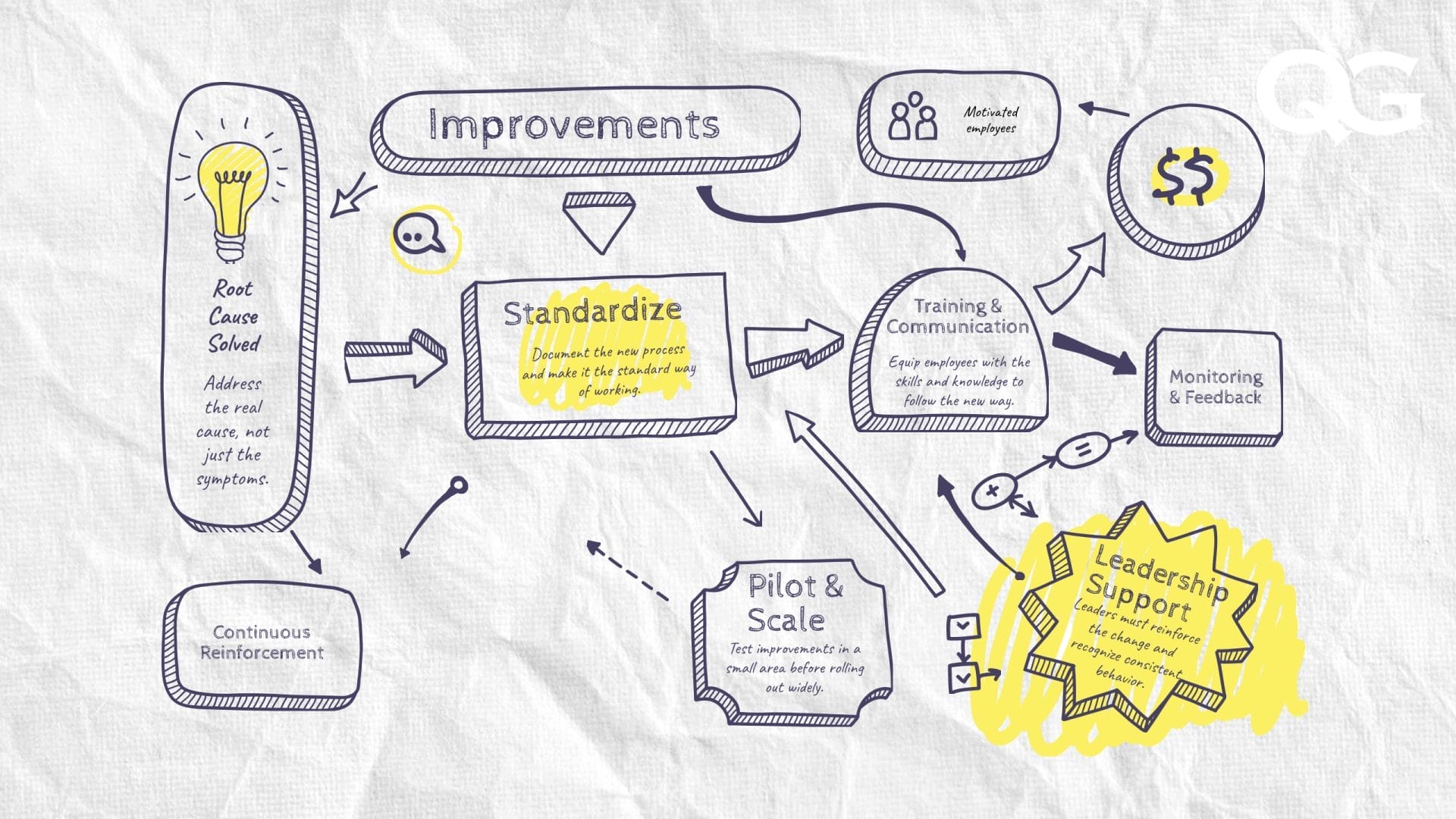Organizations spend a lot of effort on improvement projects. These may include reducing waste, increasing efficiency, or improving customer satisfaction. The problem is that many improvements do not last. Teams often go back to old habits after some time. Leaders get frustrated when the results of projects fade away.
Why does this happen? The answer is simple. Change is not just about introducing new processes. Real change happens when improvements become part of the way people work every day. For improvements to stick, organizations must focus on culture, structure, and discipline.
1. Build Ownership, Not Compliance
If employees feel that improvements are forced on them, they will not last. When pressure increases, people return to the old way of doing things. Lasting change comes when employees are part of the solution. They need to be involved in identifying problems and designing improvements. When people feel ownership, they protect and sustain changes.
2. Standardize the New Way of Working
Every improvement must be documented and standardized. Update procedures, create checklists, and align standard operating procedures with the new way of working. Standardization makes sure that improvements do not depend on a single person. It creates consistency across the organization.
3. Train and Communicate Continuously
People need the right skills to maintain changes. Provide training, refresher workshops, and quick reference material. Communication is just as important. Explain why the change was needed, what benefits it brings, and how it supports business goals. Repeated and clear communication reinforces the message.
4. Monitor with Metrics and Feedback
Use data to track whether improvements are being sustained. Define key performance indicators linked to the change. Make the results visible with dashboards or regular team updates. Collect feedback from employees about what works and what does not. This helps fine-tune improvements before they fade.
5. Align Leadership Support
Leaders play a critical role. When leaders model the right behavior and keep asking about progress, teams know that improvement is a priority. Leaders should provide resources, remove barriers, and celebrate achievements. If leaders lose focus, the organization will lose focus too.
6. Integrate with Continuous Improvement Culture
Sustaining improvements is easier when continuous improvement is part of the culture. Encourage small and regular changes along with big projects. Recognize teams not only for achieving results but also for maintaining them over time. This builds a cycle of ongoing improvement.
Conclusion
Making improvements stick is not easy. It requires ownership, standardization, training, communication, metrics, leadership, and a culture of improvement. When these elements are in place, organizations move from temporary fixes to permanent progress. Sustaining improvements is what turns good projects into long-term success.

